Physical Address
304 North Cardinal St.
Dorchester Center, MA 02124
Physical Address
304 North Cardinal St.
Dorchester Center, MA 02124
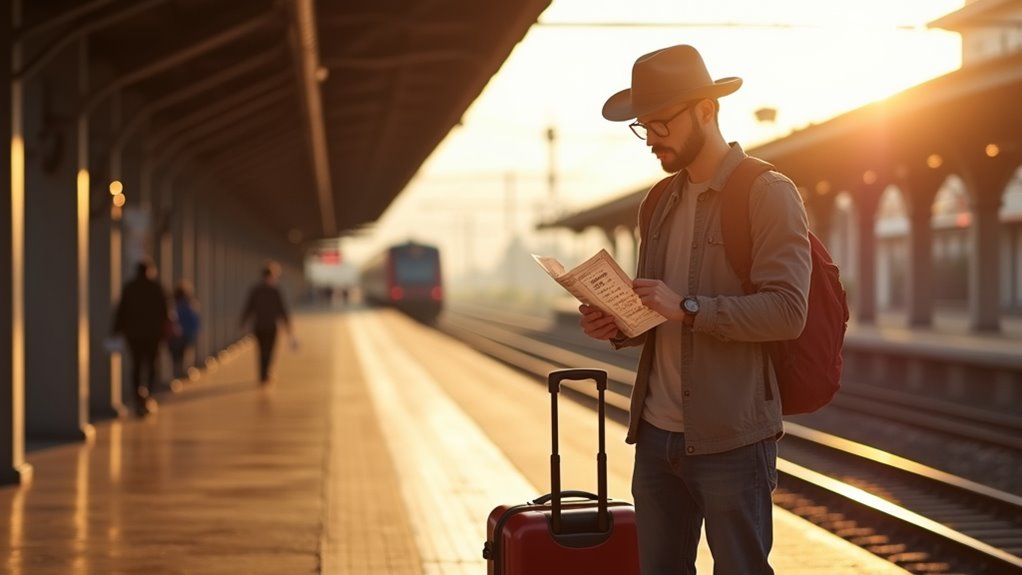
Unsuspecting tourists make these 7 critical mistakes in Italy that could ruin your dream vacation and empty your wallet.
When visiting Italy, avoid costly mistakes like not validating train tickets (risking €100-500 fines), dining at tourist-trap restaurants with multiple-language menus, and cramming too many cities into your itinerary. Don’t ignore church dress codes, exchange currency at tourist kiosks, miss regional cuisines, or rely exclusively on taxis. Instead, seek authentic experiences, use public transportation, and respect local customs. These simple adjustments will transform your Italian adventure from ordinary to extraordinary.
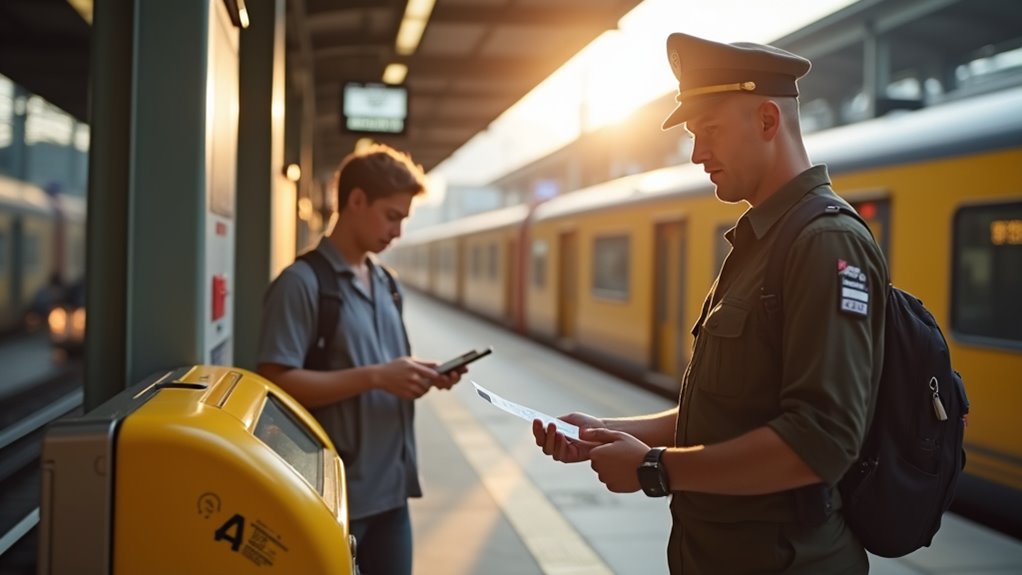
When traveling through Italy’s picturesque countryside by train, one seemingly minor oversight can quickly turn into a costly mistake. Many tickets, especially for regional trains without reserved seating, require validation before boarding.
This means inserting your paper ticket into one of the yellow machines at the station to receive a timestamp. Regional paper tickets are valid for up to 4 hours after validation on any train along your purchased route.
Skip this step and you’ll face fines between €100-€500, regardless of having a legitimate ticket. This common tourist trap catches thousands of visitors yearly.
Not all tickets need validation though—high-speed trains with reserved seats are typically pre-validated.
Your best defense? Check if your ticket needs stamping, purchase online when possible (these are usually pre-validated), and always locate the yellow validation machines before your train arrives. This validation mistake is particularly common among travelers heading to party destinations like Milan and Rome, where excitement about the famous Italian nightlife can distract from these important travel details.
Lurking within steps of Italy’s iconic landmarks, tourist trap restaurants present one of the most common pitfalls for visitors keen to sample authentic Italian cuisine.
Watch for telltale signs: multi-language menus with flag icons, laminated photos of dishes, and staff aggressively beckoning you inside. These establishments typically charge 20-50% more while serving microwaved meals with pre-made sauces. Restaurants that open for dinner at 5:00 p.m. typically cater exclusively to travelers, as Italians dine much later.
Beware restaurants with flag-adorned menus and staff luring you in—you’ll pay premium prices for reheated, inauthentic fare.
Avoid places advertising “traditional Italian” fare like chicken parmigiana or generic spaghetti Bolognese—these aren’t authentic Roman dishes. Instead, look for restaurants without travelers during peak Italian dining hours (1-3 PM, 8-10 PM).
For genuine experiences, venture to local neighborhoods like Rome’s Trastevere, Naples’ Vomero, or Florence’s Mercato Centrale. If traveling with children, family-friendly destinations in Italy often have local eateries that balance authentic cuisine with kid-pleasing options. You’ll discover regional specialties at reasonable prices while bypassing hidden cover charges and mediocre food.
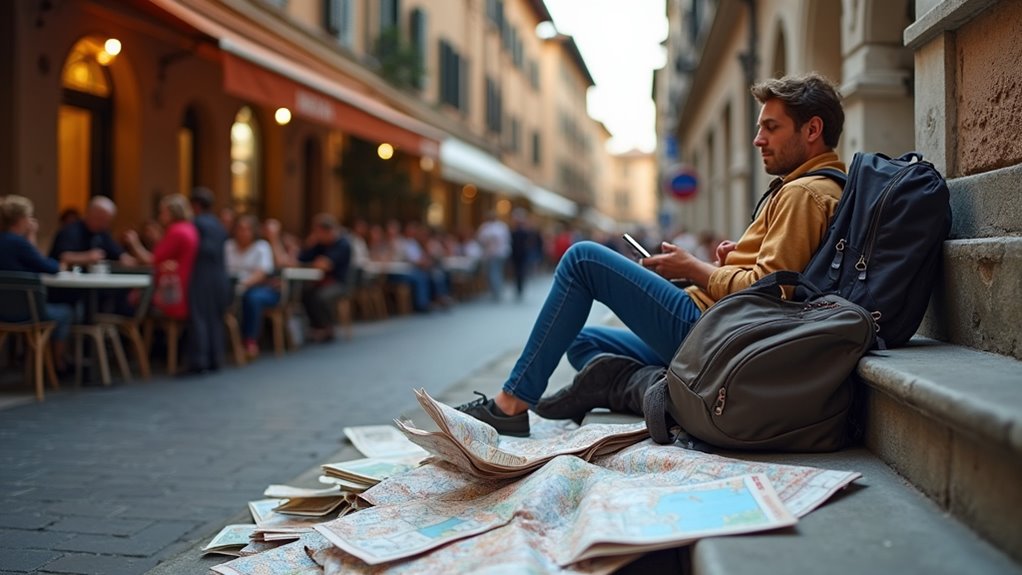
Many travelers fall victim to the “see it all” syndrome when planning their Italian adventure, cramming multiple cities into a single week and scheduling back-to-back tours from sunrise to sunset.
This approach typically backfires, leaving you exhausted rather than enchanted. Instead, embrace the Italian concept of “dolce far niente” – the sweetness of doing nothing.
Focus on exploring fewer destinations deeply rather than racing through a checklist of sites. Consider adding lesser-visited cities to your itinerary for a more authentic Italian experience.
Allow time for spontaneous discoveries: that hidden trattoria down a cobblestone alley, an impromptu conversation with locals, or simply savoring your gelato while people-watching in a piazza. Taking time to enjoy iconic Italian dishes can be the highlight of your trip, creating more meaningful memories than rushing between tourist attractions.
Build buffer days into your itinerary and account realistically for travel time between locations.
Visiting Italy’s magnificent churches and religious sites unprepared for dress code requirements can lead to disappointment and wasted time. All religious venues require shoulders and knees to be covered, with midriffs and low-cut tops strictly prohibited.
Don’t fall for common misconceptions—even minor violations like partially visible shoulders can result in denied entry. The Vatican enforces these rules most strictly, but smaller churches follow similar standards. Coastal towns aren’t exemptions; the same modesty requirements apply. This includes popular destinations like Capri’s churches, where the dress codes are enforced despite the island’s reputation for beachwear and casual attire.
Pack practical solutions: lightweight shawls, sarongs that convert shorts to acceptable length, and layering pieces. Consider planning church visits on days when you’re already wearing appropriate attire. Men should always remove hats inside churches as a sign of respect for these sacred spaces.
Remember that these codes reflect Italian cultural traditions and apply year-round, even during summer heat.
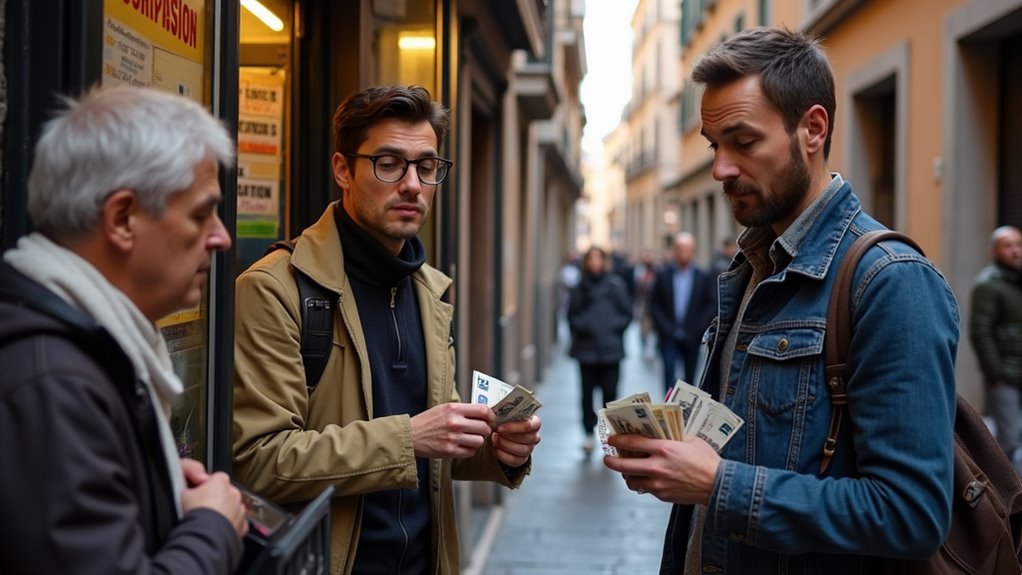
When exchanging money in Italy, you’ll face a landscape filled with potential financial pitfalls that can quietly drain your vacation budget. Tourist-heavy areas near landmarks like Ponte Vecchio often house exchanges offering less than 75% of market rates.
Avoid currency kiosks that don’t display rates upfront. These establishments frequently manipulate exchange rates or add hidden fees, resulting in significant losses—especially concerning since authorized fraud losses in Italy reached €137 million in 2024. These scams are particularly damaging as they belong to the category of impersonation tactics where fraudsters often pose as legitimate financial services. If traveling with children, consider staying at family-friendly hotels in Naples which typically offer secure exchange services at better rates than street vendors.
Instead, use bank ATMs for better rates (while watching for fees), or exchange through your home bank before traveling.
If you must use an exchange office, verify the mid-market rate on your phone first, and walk away if they won’t disclose rates clearly. Remember, legitimate exchanges won’t pressure you with urgency tactics.
One of Italy’s most extraordinary treasures lies in its incredible culinary diversity, with each of the country’s 20 regions boasting distinct food traditions that you’ll miss entirely if you stick to generic “Italian” dishes.
Northern Italian cuisine features butter and cream-based dishes, while southern regions embrace olive oil and tomatoes.
To experience authentic Italian food:
Don’t limit yourself to pizza and spaghetti when Italy offers an incredible tapestry of regional flavors.
June visitors can enjoy fresh summer ingredients that elevate local dishes to their seasonal best in popular destinations throughout the country.
Be wary of restaurants displaying Italian flags or claiming to be “100% authentic Italian” as these often indicate Italian-sounding products that may not represent genuine regional cuisine.
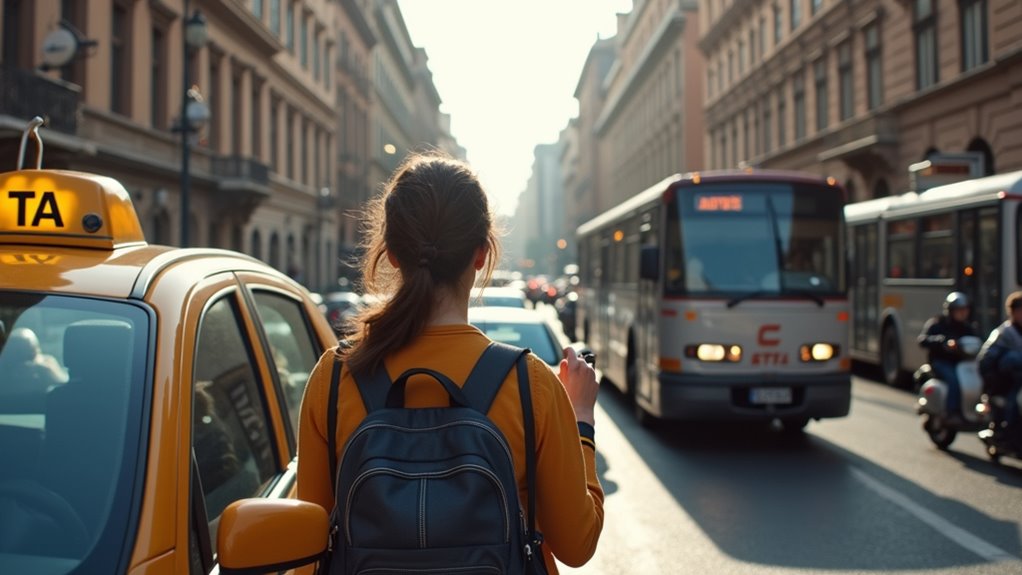
Many travelers fall into the costly trap of exclusively relying on taxis to navigate Italy’s vibrant cities, missing out on the country’s efficient and budget-friendly public transportation networks.
Italy’s extensive public transit systems offer wide coverage at a fraction of taxi prices, which often include fixed rates and additional fees for luggage or night rides.
In Rome alone, you’ll pay €48 for an airport taxi when public options cost considerably less.
Beyond saving money, choosing buses, trams, and metros provides authentic culture—you’ll interact with locals and experience Italian daily life firsthand. Students in particular frequently choose public and shared transportation over private options when commuting to school. Whether exploring popular destinations like Sardinia or Amalfi, public transit gives you flexibility while avoiding tourist price markups.
You’ll also contribute to environmental sustainability while avoiding traffic congestion.
For a more genuine, economical, and eco-friendly Italian adventure, embrace public transportation rather than defaulting to taxis.
Italy is a treasure trove waiting to be explored, but even seasoned travelers can stumble into these common pitfalls. By avoiding these seven mistakes, you’ll save money, time, and frustration while experiencing the authentic Italy that lies beyond the tourist façade. Remember, the best Italian memories aren’t found in guidebooks—they’re created when you learn about local customs and rhythms with open eyes and a prepared heart.